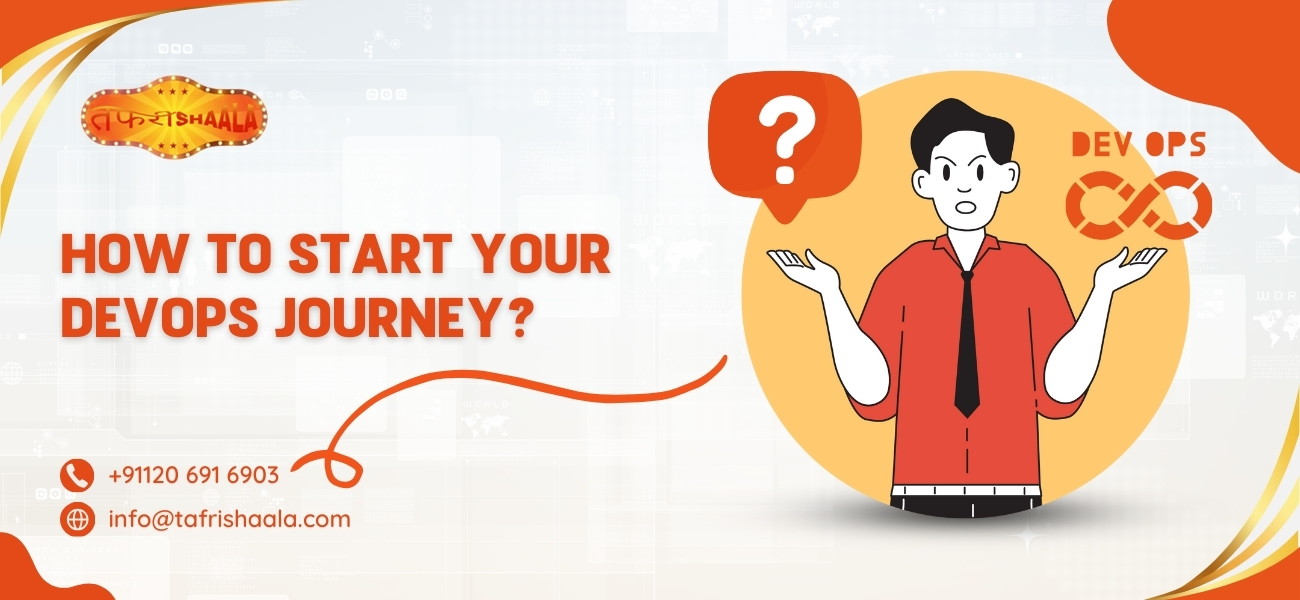How to Start Your DevOps Journey: A Comprehensive Guide

DevOps is a new and revolutionary model in the field of software development & IT operations that integrates both the development and operating side at once. DevOps is the practice which forms the culture that is all about collaboration, automation, and constant delivery and thereby enables the organizations to deliver software in a more efficient and effective manner. The following is a practical guide to DevOps that can be useful in case you are planning to venture into DevOps.
1. Learn about the culture and value propositions of DevOps
Let me start by saying that prior to exploring the tools and technologies of DevOps, one needs to know what DevOps addresses. DevOps is not just a set of practices; it’s a cultural shift that emphasizes DevOps is not just a set of practices; it’s a cultural shift that emphasizes:
Collaboration: Elimination of barriers and/or gap between development and the operation or other related parties.
Automation: Efficient ways in cutting various tasks which delay procedures and increase chances of some mistakes.
Continuous Integration and Continuous Deployment (CI/CD): Continuously incorporating new code and deploying it to the production environment without the need of manual intervention.
Monitoring and Feedback: The availability and consultation of the constantly updated list of applications in production and feeding along with the list as a feed-forward to the development applications.
2. Software development is the process of designing and building software applications that meet the user’s requirements efficiently and in an effective manner.
Even if you do not need to code yourself you should have a basic understanding of software development. Become acquainted with programming languages such as Python, Bash or PowerShell and what is version control system GIT? This knowledge will be extremely useful once you begin to start automating task and creating CI/CD pipelines.
3. Get comfortable with Web Servers
Still, comparable cross-component procedure interactions are frequently described in scripts and CLI tools by DevOps engineers. Not that you should avoid the GUI at all costs but mastering the command line interface is very useful. One can start by practicing some of the Linux commands because Linux is a dominating force in the DevOps environment.
4. Discover what CI/CD, or Continuous Integration and Continuous Deployment means.
Continuous Integration/Continuous Delivery is what’s in the middle of everything called DevOps. Start by understanding the concepts of continuous integration and continuous deployment: Start by understanding the concepts of continuous integration and continuous deployment:
Continuous Integration (CI): To contribute their code changes, developers often perform the merge operation. Automated tests are then performed in the hopes of not messing up existing functionality in a project with the integration of new code.
Continuous Deployment (CD): When the code has gone through all the test it becomes deployed to production immediately. This also helps in release of software with high speed and accuracy.
Some of the tools that you need to get acquainted with are Jenkins, GitLab CI, Circle CI and GitHub actions.
5. This case focuses on examining Infrastructure as Code (IaC).
Infrastructure as Code or IaC is commonly recognized within the contexts of DevOps as the practice that integrates the manual provisioning of the infrastructure into code and vice versa. Learn about tools like:
Terraform: A tool used to construct, modify, Version and upgrade the infrastructure without causing any harm to the system.
Ansible, Puppet, and Chef: Tools for managing configurations that can be used for automation of Infrastructure provisioning.
Docker: A system where you ought to be able to build, run and orchestrate containers.
6. Acquire Cloud Computing as a Skill
Many of the current industry references including AWS, Microsoft Azure, and Google Cloud are standard components of the current DevOps model. Familiarize with cloud terminologies and solutions like virtualization, Computer, Network, Storage & Cloud Solutions & Services. Some of the DevOps tasks include setting up CI/CD systems and deploying applications and all of these are cloud-based.
7. Embrace Automation
DevOps cannot be talking about DevOps without talking about the role of automation. Emphasize automation of monotonous tasks that in one way or the other are time consuming for instance testing, deployment, and infrastructure setup. Buy software knowledge regarding Scripting languages and learn various automation tools to decrease our repetitive work.
8. Monitoring and logging are important elements for analyzing and investigating the behaviour of the software, systems, and services that one is responsible for managing. The following represents a strategy that one can use to get started in monitoring and logging:
Logging and Monitoring are important for the stability of the application that is being executed.
Learn about tools like:
Prometheus and Grafana: For the event and notification regarding the clinical indication.
ELK Stack (Elasticsearch, Logstash, Kibana): Commands for logging and for visualizing logs in a centralized manner.
It is with these tools that one may identify and fix problems, which in turn enhances the smooth running of your systems.
9. Post to Open-Source Forums
It would be helpful if you contributed to open-source Projects to learn DevOps. It becomes practical, where you get to work with tools that are in use and interact with developers and operations personnel. A good starting point is on the platforms like GitHub.
10. Join a DevOps Community
Information on DevOps has become increasingly widespread and, on the rise, and therefore it goes without saying that it is important to keep track of current tendencies and recommendations. Make friends in the social networks, go to seminars, attend conferences and meet ups to find other DevOps pals to interact with. It can be useful to have an insight of what others have and have not done since it can save a lot of time and effort.
11. Certifications and Learning Resources
There is also the option of getting certified for DevOps to prove your competency in the area. Some popular certifications include:
AWS Certified DevOps Engineer
Google Professional DevOps Engineer
Microsoft Certified: L3: DevOps Engineer Expert
Thirdly, there are online classes from where a learner can enroll for DevOps course such as Tafrishaala, Udemy, Coursera, and Pluralsight that has a totality of DevOps classes.
12. Start Small and Scale
Once you gain some experience in DevOps try to begin with a small project implementation. Optimize a process and reduce human error by automating a straightforward process or building an uncomplicated CI/CD pipeline or by orchestrating an application into a container. As you continue with your work, try to take up more challenging tasks as you practice your skills. Just bear in mind that, in the process of DevOps, knowledge is the key to doing the best.
Also learn about the ultimate PHP Course.

